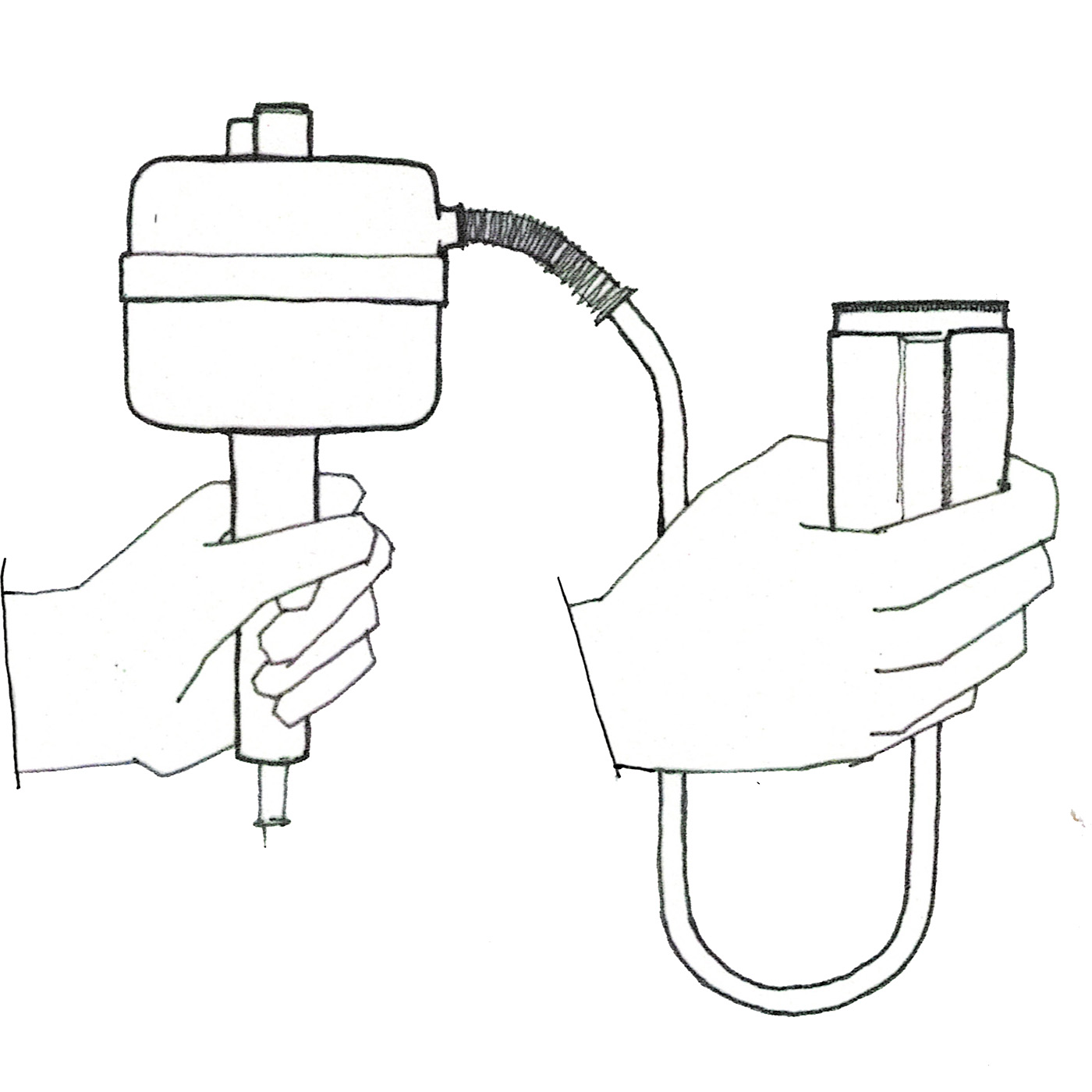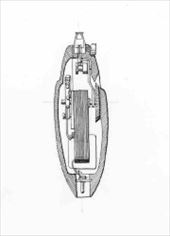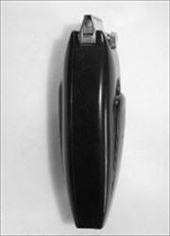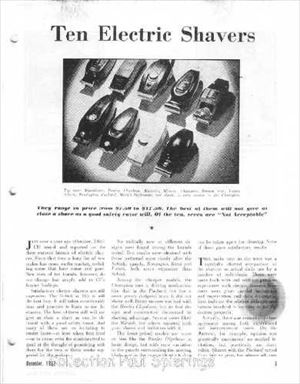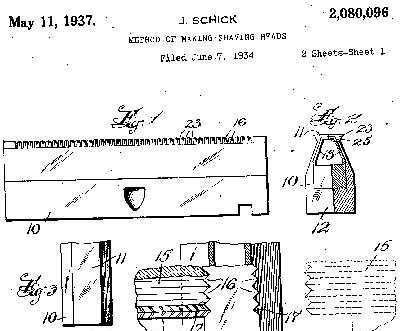■THE BEGINNINGS OF THE SHAVER
Do you know when and by whom the electric shaver (electric razor) you use every morning was made?
■SCHICK 
These two Consumer Union Reports are what I have been looking for since I started this site. They are posted here with the kindness of Mr. Peter M. Jonker and Mr. Paul Spierings.
[This Consumers Union Reports available on my site supported by Mr.Peter
M.Jonker, Mr.Paul Spierings and his archives data]
■ Comparing electric shavers in Consumer Union Report
【This may be the world’s first electric shaver comparison test】
Consumer Union is a non-profit consumer organization that was granted permission to establish as Consumers Union (CU) in New York State, USA in February 1936 (Showa 11) and is still active today. It issued the first issue of Consumers Union Reports in May of the year of establishment. They bought the products and posted their evaluations. The history of the organization says, “At the time of publication, it was in the midst of the Great Depression, so there was a limit to the budget and they could not buy very expensive items.” They started with about 4,000 copies of the first issue and issued 100,000 copies in 1946, 10 years later. Since the beginning of publication, product evaluations have been in three stages: “Best Buy”, “Acceptable” and “Not Acceptable”.
The test article in the December 1937 issue featured 10 models, showing that many competitors had entered the category of electric shavers created by Schick.
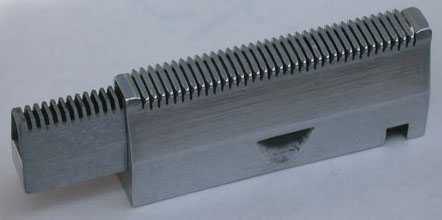

■ DC or AC - The electric situation at that time
Not only Schick, but all the shavers at that time were compatible with both AC and DC.
It is unthinkable in the modern world where AC is the norm for electricity, but when electricity began to spread to the general public, DC started by Edison was the beginning of the electric business. Later, AC power based on the theory and method of Nikola Tesla, backed by Westinghouse, competed.
Edison is famous for his light bulbs, as he succeeded in using bamboo from Kyoto for the filament in the practical application of light bulbs, but it seems that his main goal was to make electricity a business, and light bulbs were just a great example of its use. Among the things he invented, there are many tools for commercializing electricity, such as “reinforced concrete” and “plywood” which are materials needed to build power plants, and “power meter” which measures the amount of electricity used.
DC had a lot of transmission losses from the power plant to the household (business) where it was used, and had to build power plants near the demand area, so it inevitably became small-scale and could not compete with AC, which could supply power from a distance with large-scale power generation.
Nikola Tesla, the inventor of AC motors and generators, was born in Romania during the Austro-Hungarian Empire and moved to the United States and worked for Edison’s Electric Light Company, but clashed with Edison’s DCism and became independent. Westinghouse backed him up and commercialized it. The superiority of AC seems to have been established around the time of the Chicago World’s Fair, but until very recently there were DC (DC) power elevators in some parts of Manhattan and GE continued to supply them.
It feels strange that the name of Tesla, the inventor of AC motors, has become the name of an electric car manufacturer with battery (DC) power. Although modern car generators are alternators that generate AC…
The rating display of Schick-Model S is “DC-AC 9WATTS” on the body and “110 120 V” on the head screw head.


